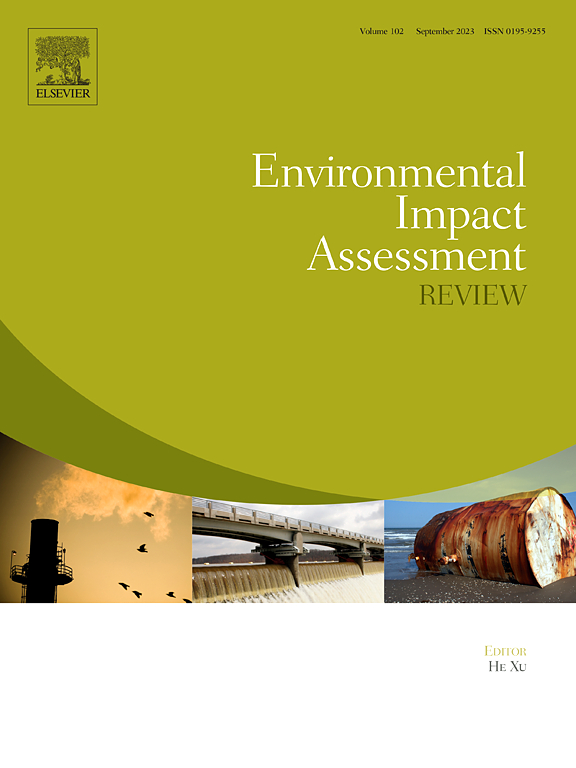Accounting and sensitivity analysis of CO2 emissions from typical food cold chain equipment in China
IF 11.2
1区 社会学
Q1 ENVIRONMENTAL STUDIES
引用次数: 0
Abstract
The current status of CO2 emissions from cold chain equipment in China is somewhat unclear due to deficiencies in accounting methods and relevant data. Future emission reduction efforts could not be effectively guided and conducted as a result. Given this situation, the actual running data and holdings of typical cold chain equipment are obtained, as well as the latest authoritative parameters. CO2 emission characteristics of individual cold chain equipment are examined. Results suggest that for large equipment such as cold stores, the CO2 emissions due to high GWP refrigerant leakage are remarkably high. For the R507A cold store, refrigerant-related emissions can account for a maximum of 87.2 % of total annual emissions and 92.1 % of total lifetime emissions, respectively. The situation is reversed for small equipment such as refrigerated vehicles and domestic refrigerators. Refrigerant-related emissions are relatively negligible, even with high GWP refrigerant use and high refrigerant leakage rates. A sensitivity analysis indicates that the size of the equipment has a significant impact on CO2 emissions. This factor is considered for estimating the current total CO2 emissions. Results show total emissions of 203.1 Mt. for medium refrigerant leakage scenario. Total energy- and refrigerant-related emissions are 164.8 and 38.3 Mt., respectively, making the former a priority for future reductions. Emissions from refrigerated retail and refrigerated end equipment are 90.6 and 74.7 Mt., respectively, which are the two largest emitters. This study may contribute to the sustainable development of cold chain equipment in China.
中国典型食品冷链设备CO2排放核算及敏感性分析
由于核算方法和相关数据的不足,目前中国冷链设备的二氧化碳排放现状尚不清楚。因此,未来的减排工作无法得到有效的指导和实施。在这种情况下,得到了典型冷链设备的实际运行数据和持有量,以及最新的权威参数。对单个冷链设备的CO2排放特性进行了研究。结果表明,对于冷库等大型设备,由于高GWP制冷剂泄漏造成的CO2排放量非常高。对于R507A冷库,制冷剂相关排放量最高可占年总排放量的87.2%,占全寿命总排放量的92.1%。冷藏车和家用冰箱等小型设备的情况正好相反。即使在高GWP制冷剂使用和高制冷剂泄漏率的情况下,与制冷剂相关的排放也相对可以忽略不计。敏感性分析表明,设备的大小对二氧化碳排放有重大影响。该因子用于估算当前的二氧化碳总排放量。结果表明,在中等制冷剂泄漏情景下,总排放量为203.1亿吨。与能源和制冷剂相关的总排放量分别为1.648亿吨和3830亿吨,使前者成为未来减排的重点。冷藏零售和冷藏终端设备的排放量分别为960万吨和7470万吨,这是两个最大的排放者。本研究可为中国冷链设备的可持续发展提供参考。
本文章由计算机程序翻译,如有差异,请以英文原文为准。
求助全文
约1分钟内获得全文
求助全文
来源期刊

Environmental Impact Assessment Review
ENVIRONMENTAL STUDIES-
CiteScore
12.60
自引率
10.10%
发文量
200
审稿时长
33 days
期刊介绍:
Environmental Impact Assessment Review is an interdisciplinary journal that serves a global audience of practitioners, policymakers, and academics involved in assessing the environmental impact of policies, projects, processes, and products. The journal focuses on innovative theory and practice in environmental impact assessment (EIA). Papers are expected to present innovative ideas, be topical, and coherent. The journal emphasizes concepts, methods, techniques, approaches, and systems related to EIA theory and practice.
 求助内容:
求助内容: 应助结果提醒方式:
应助结果提醒方式:


